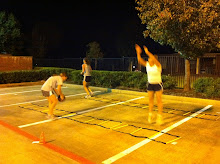

Snacks are a bigger part of kids’ diets than in the past. Snacks can make positive or negative contributions to kids’ diets – depending on the choices we offer. Below are ideas of healthy drinks and snacks for teachers, caregivers, children’s programs, and parents to serve to children in the classroom, in after-school programs, at soccer games, home, and elsewhere.
· Fruits and Vegetables:
Almost all of the snacks served to children should be fruits or vegetables. Do taste tests or let kids choose (or vote for) new fruits and vegetables to try. Fruit can be served whole, sliced, cut in half, cubed, or in wedges. Canned, frozen, and dried fruits are easy and usually need little preparation.
Healthy options include: fresh fruits and vegetables; frozen fruit; applesauce; fruit cups or canned fruit (in juice or light syrup); dried fruit and fruit leathers (without added sugars); fruit salad; fruit juice popsicles; and homemade smoothies. Vegetables can be served with dips like hummus, bean dip, or salad dressing; in salads; or veggie pockets in whole wheat pita.
· Healthy Grains (whole grains that are low in fats and sugars):
· Healthy Grains (whole grains that are low in fats and sugars):
Serve mostly whole grains, which provide more fiber, vitamins, and minerals than refined grains. (Whole wheat [or other whole grain] should be the first ingredient listed.)
Healthy whole grain options can include: English muffins, pita, or tortillas; breakfast cereal; crackers; rice cakes; popcorn; tortilla chips; granola; cereal bars; breadsticks; or flatbreads. Refined grains, such as pretzels and goldfish, should not be everyday offerings. Be sure to read nutrition labels to
pick options that are low in sugars, saturated fat, and trans fat.
· Low-Fat Dairy Foods:
pick options that are low in sugars, saturated fat, and trans fat.
· Low-Fat Dairy Foods:
To protect children’s bones and hearts, make sure all dairy foods are low-fat or fat-free, such as yogurt and low-fat pudding. Since cheese is the #2 source of heart-damaging saturated fat in children’s diets, choose lower-fat cheeses, serve small portions, and serve cheese with other foods like fruit, vegetables, or whole grain crackers.
· Nuts and Trail Mix:
· Nuts and Trail Mix:
Since nuts are high in calories, it is best to serve small portions (a small handful) and serve them along with another snack, such as fruit.
Healthy Beverages
· Water should be the main drink served to kids at snack times. Water satisfies thirst without adding calories or sugars (and it is low-cost!).
· Seltzer or Sparkling Water – Look for calorie-free varieties; flavored or unflavored.
· Low-Fat and Fat-Free Milk – Milk is a terrific source of calcium and vitamin D, but it is also the #1 source of heart-damaging saturated fat in children’s diets. Choose fat-free (skim) or low-fat (1%) instead of whole or 2% (reduced-fat) milk. Soy and rice “milks” (fortified withcalcium and vitamin D) also are healthy options.
· Fruit Juice – Choose only 100% fruit juice, but limit juice to no more than 6 ounces (a little less than a cup) for 1-6 year olds and no more than 12 ounces (1½ cups) for 7-18 year olds.
Avoid juice drinks, which, nutritionally, are no better than soda pop.
The label should list 100% juice and avoid drinks with sugar or high fructose corn syrup in the ingredient list.
Healthy Beverages
· Water should be the main drink served to kids at snack times. Water satisfies thirst without adding calories or sugars (and it is low-cost!).
· Seltzer or Sparkling Water – Look for calorie-free varieties; flavored or unflavored.
· Low-Fat and Fat-Free Milk – Milk is a terrific source of calcium and vitamin D, but it is also the #1 source of heart-damaging saturated fat in children’s diets. Choose fat-free (skim) or low-fat (1%) instead of whole or 2% (reduced-fat) milk. Soy and rice “milks” (fortified withcalcium and vitamin D) also are healthy options.
· Fruit Juice – Choose only 100% fruit juice, but limit juice to no more than 6 ounces (a little less than a cup) for 1-6 year olds and no more than 12 ounces (1½ cups) for 7-18 year olds.
Avoid juice drinks, which, nutritionally, are no better than soda pop.
The label should list 100% juice and avoid drinks with sugar or high fructose corn syrup in the ingredient list.




















No comments:
Post a Comment